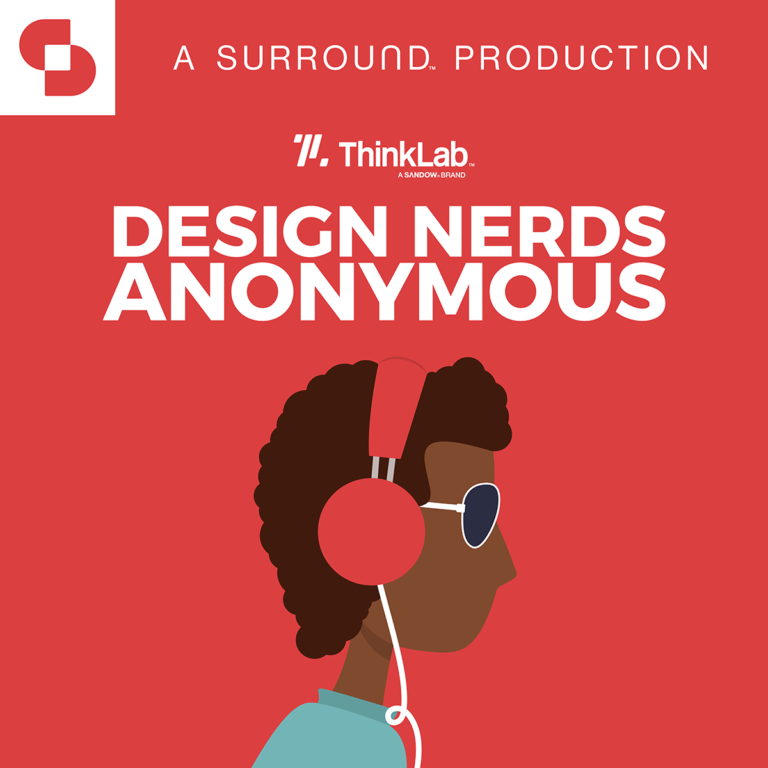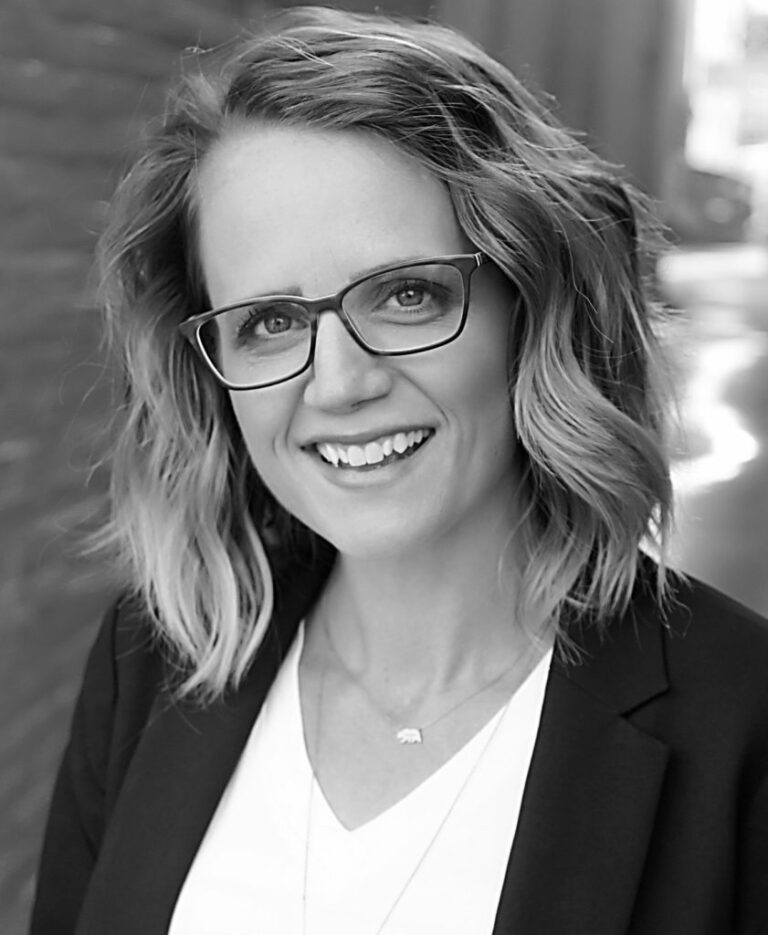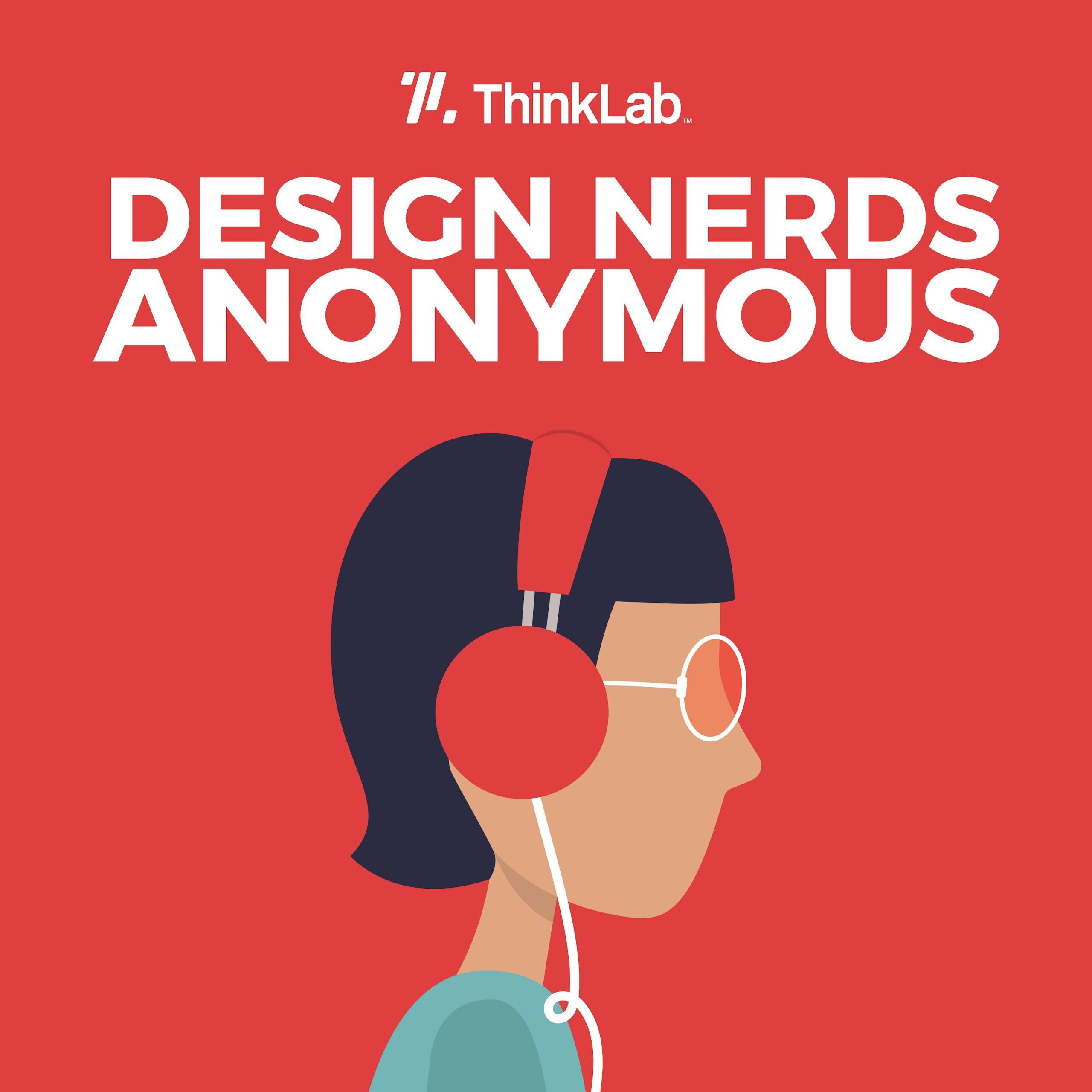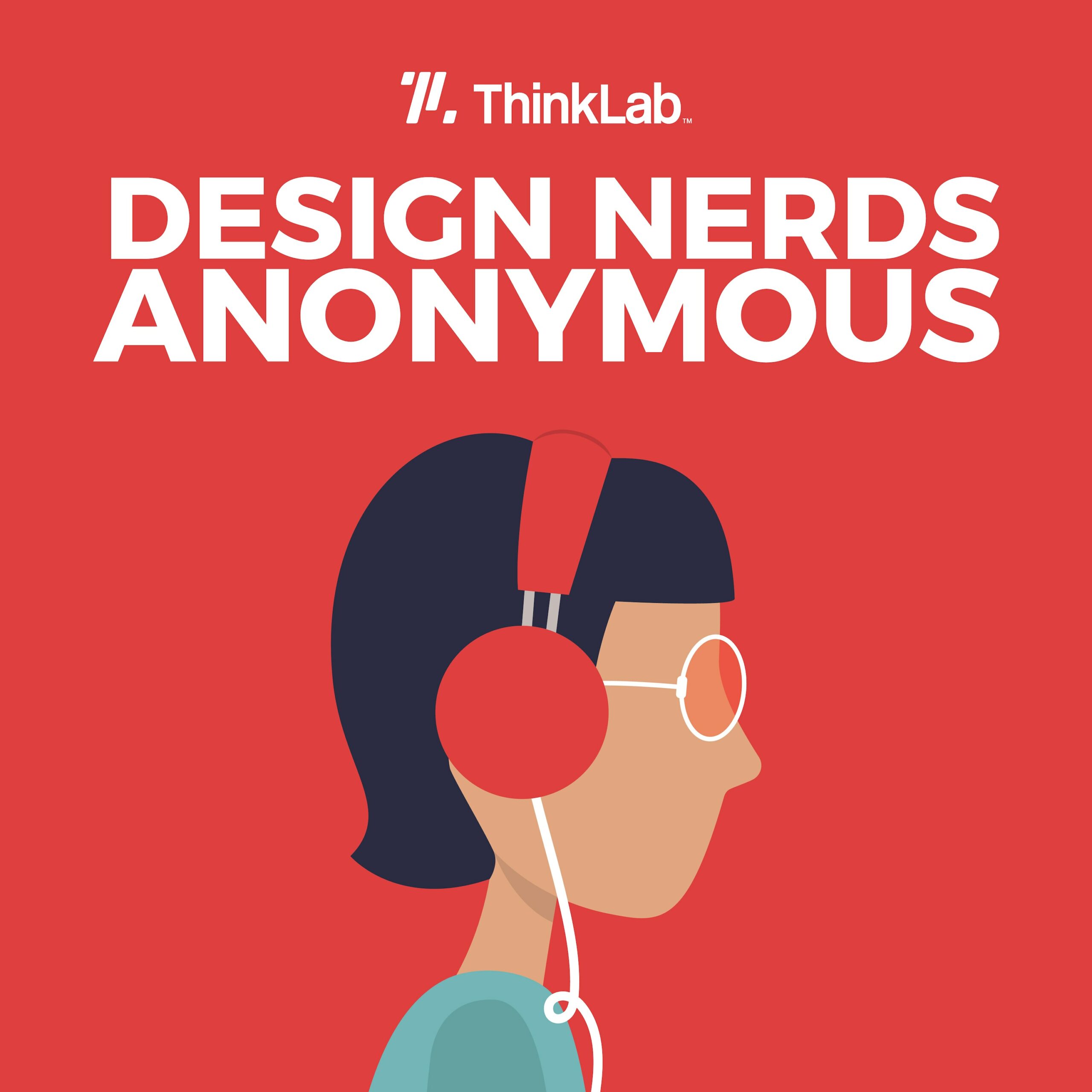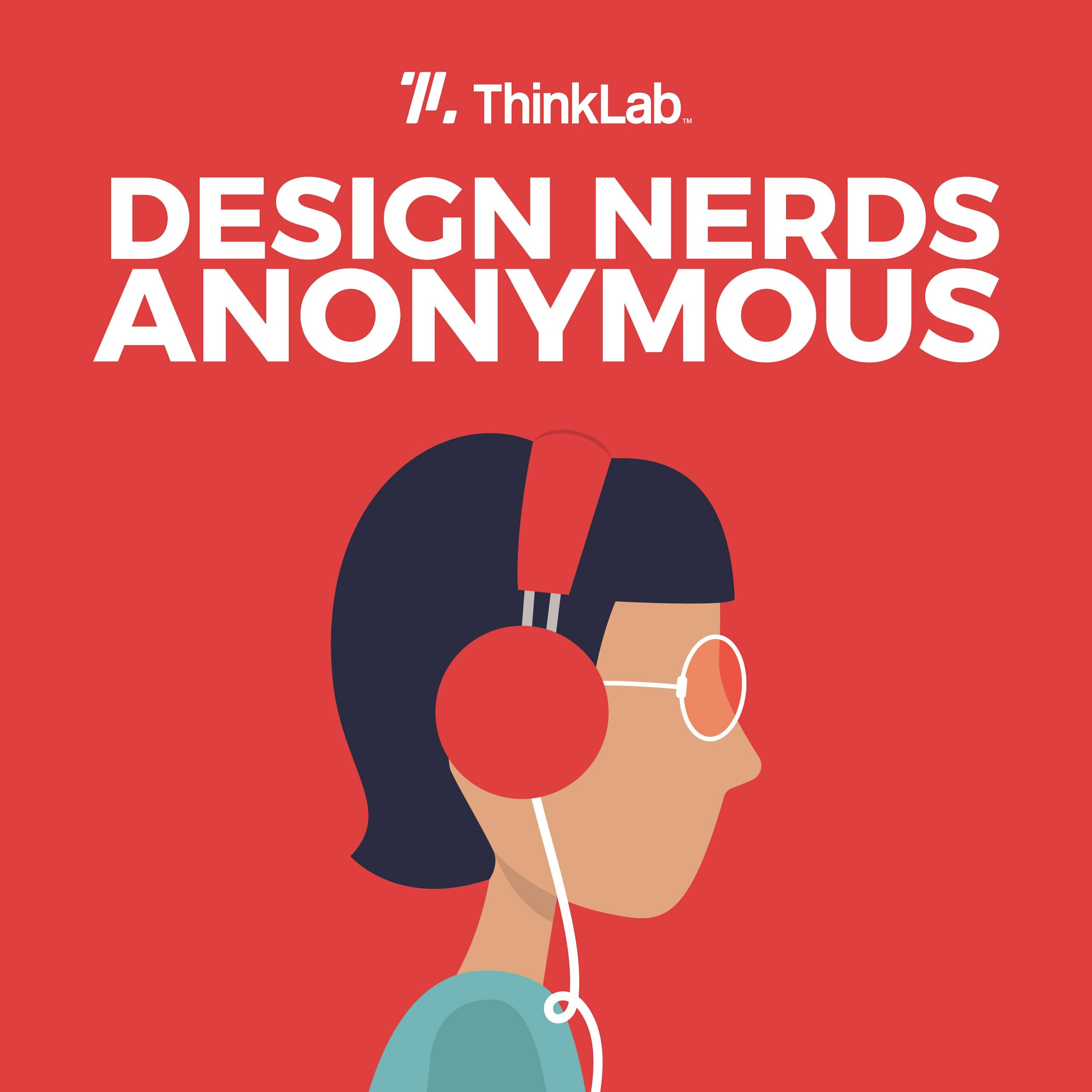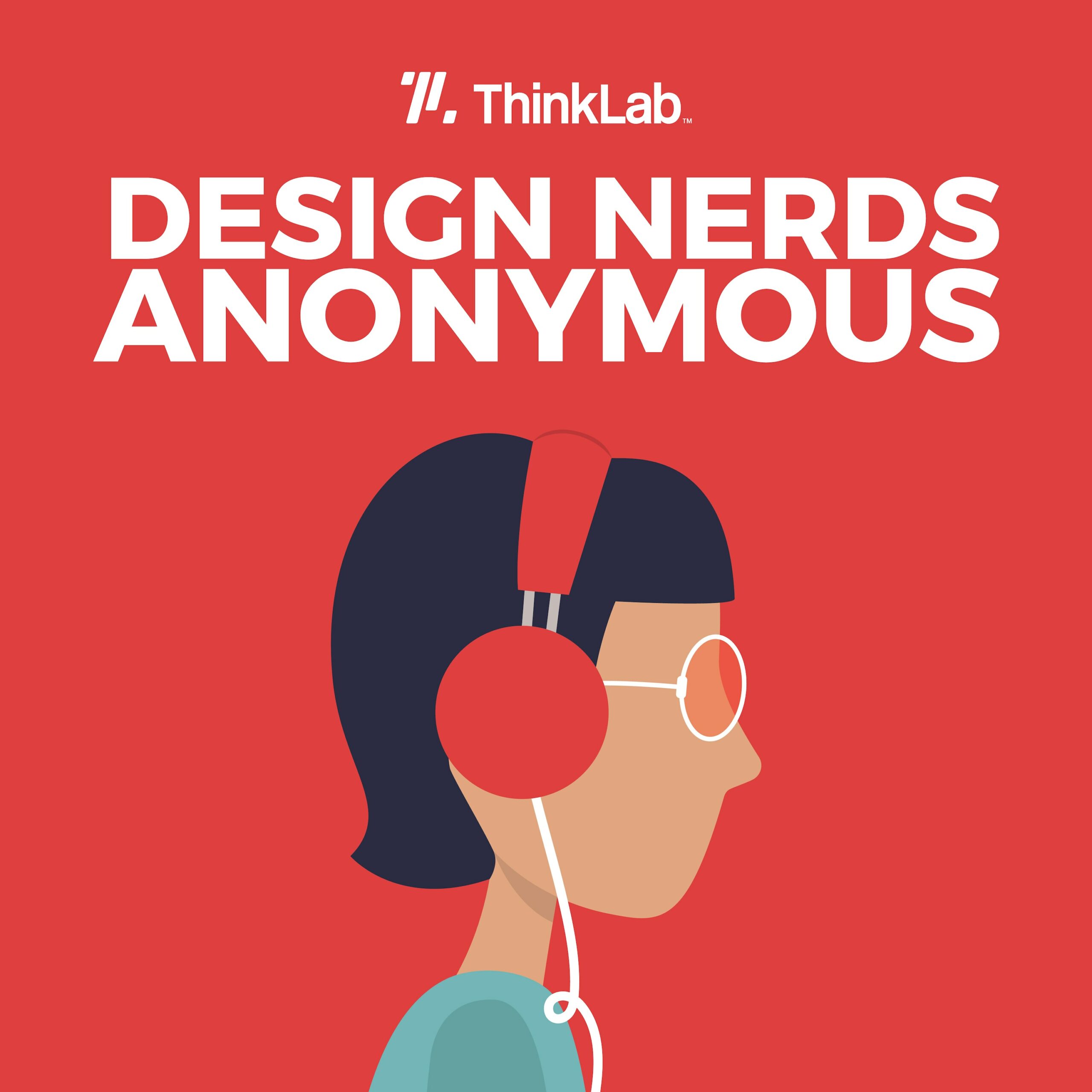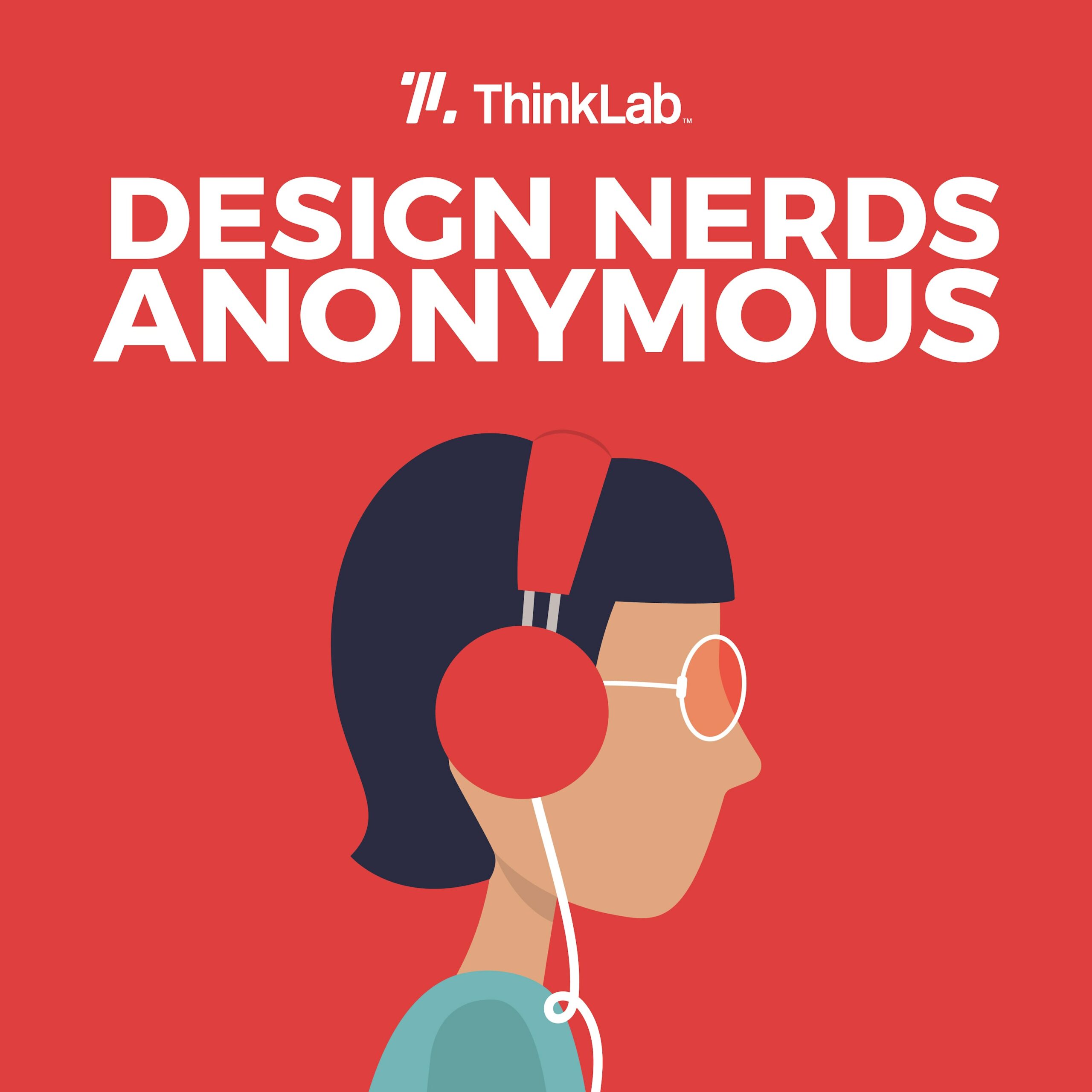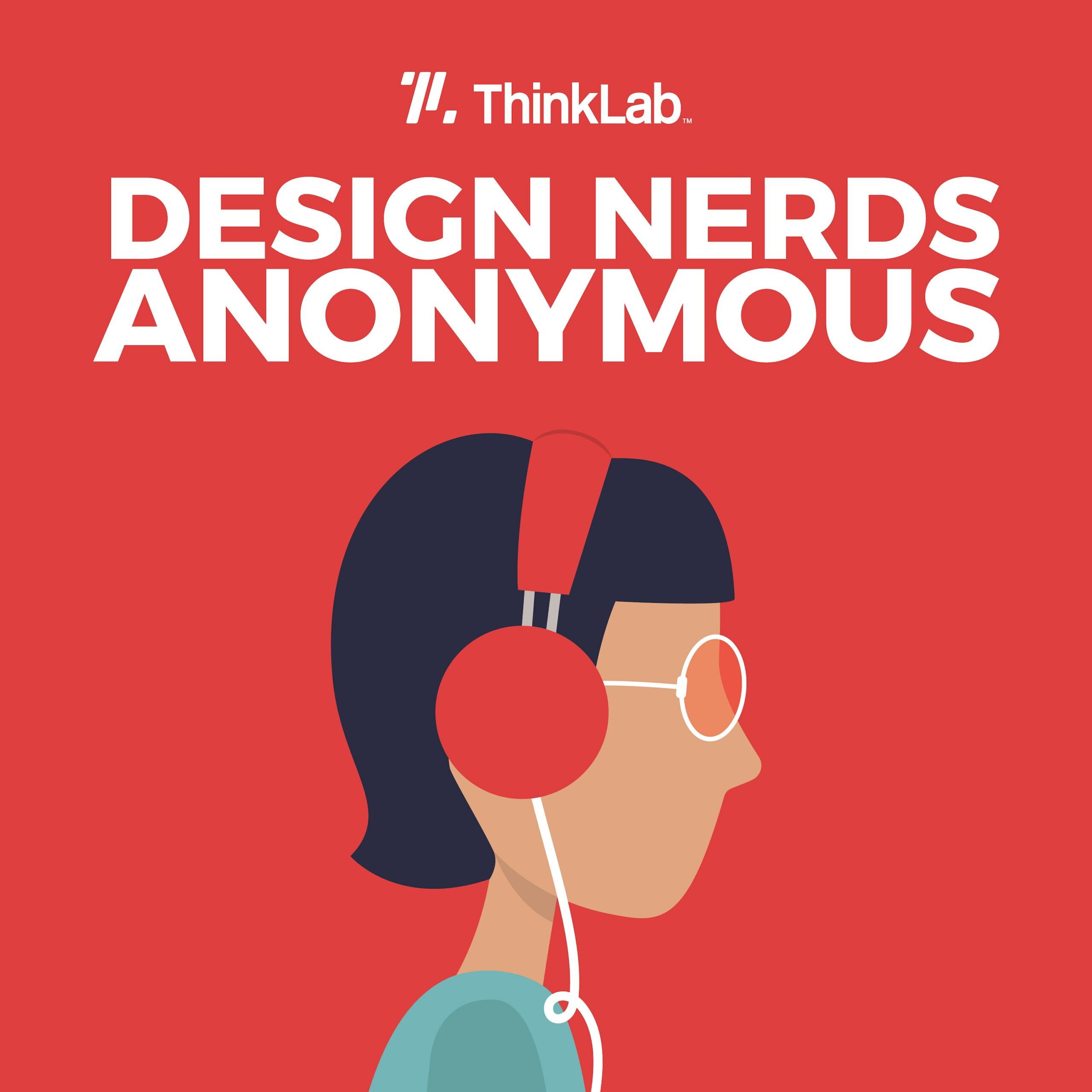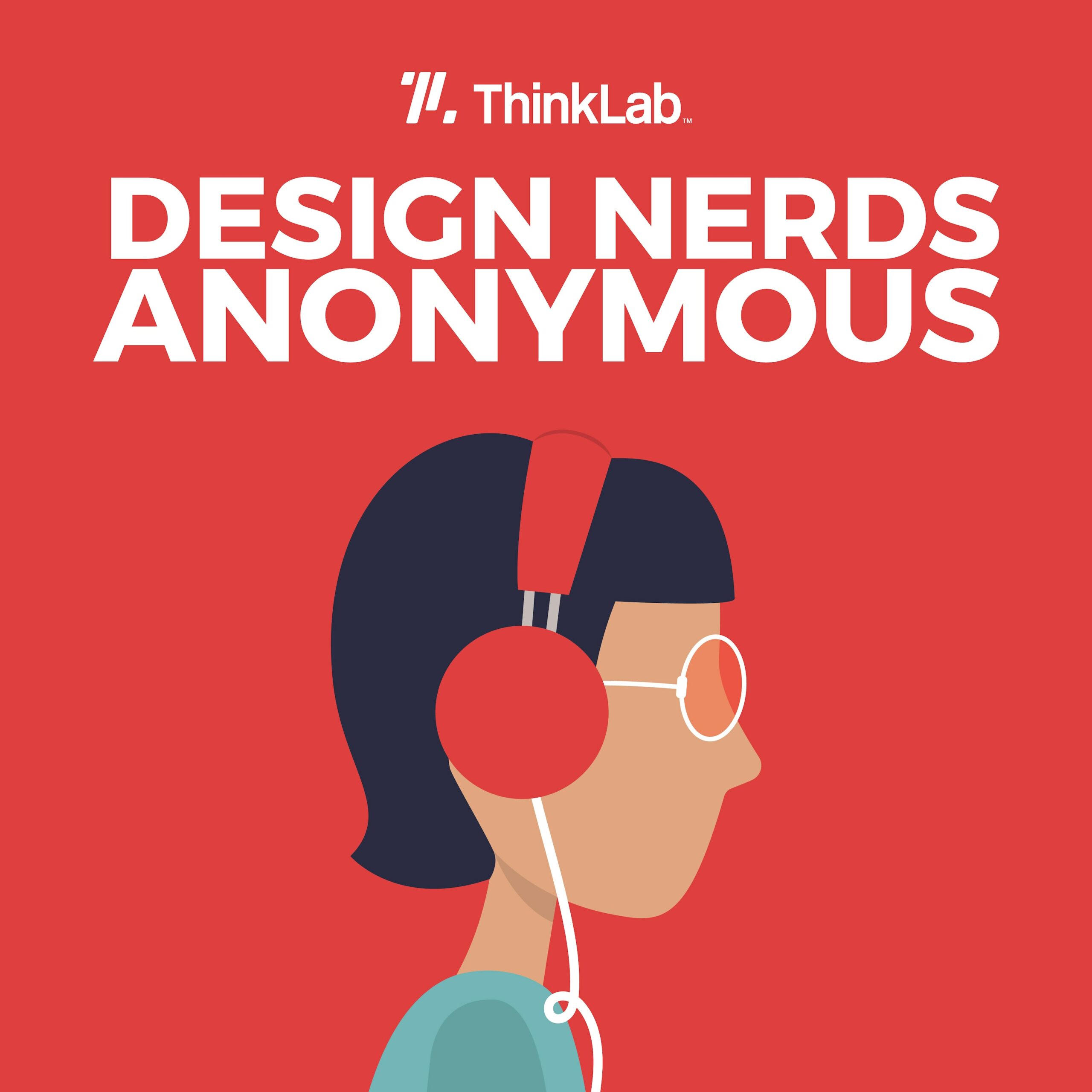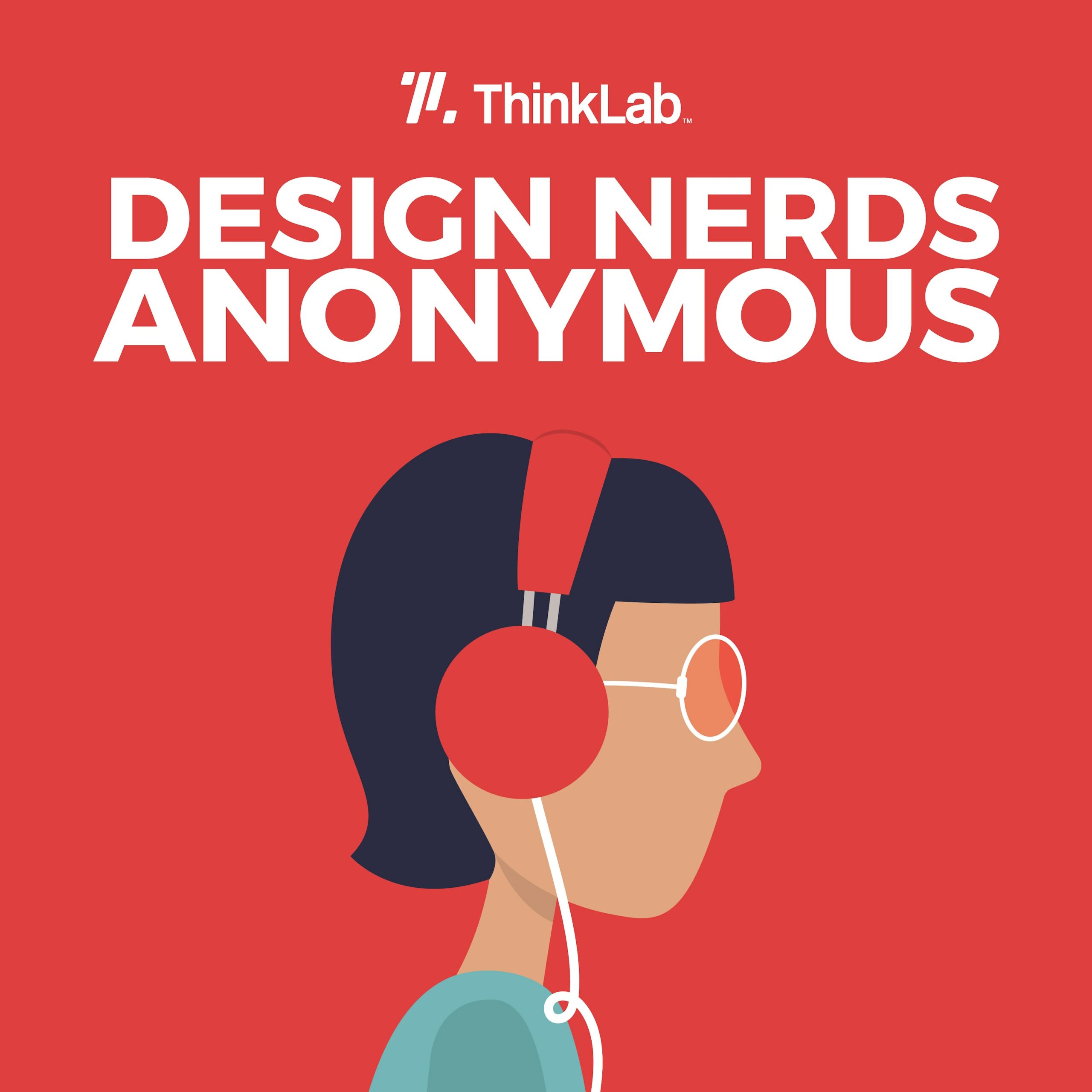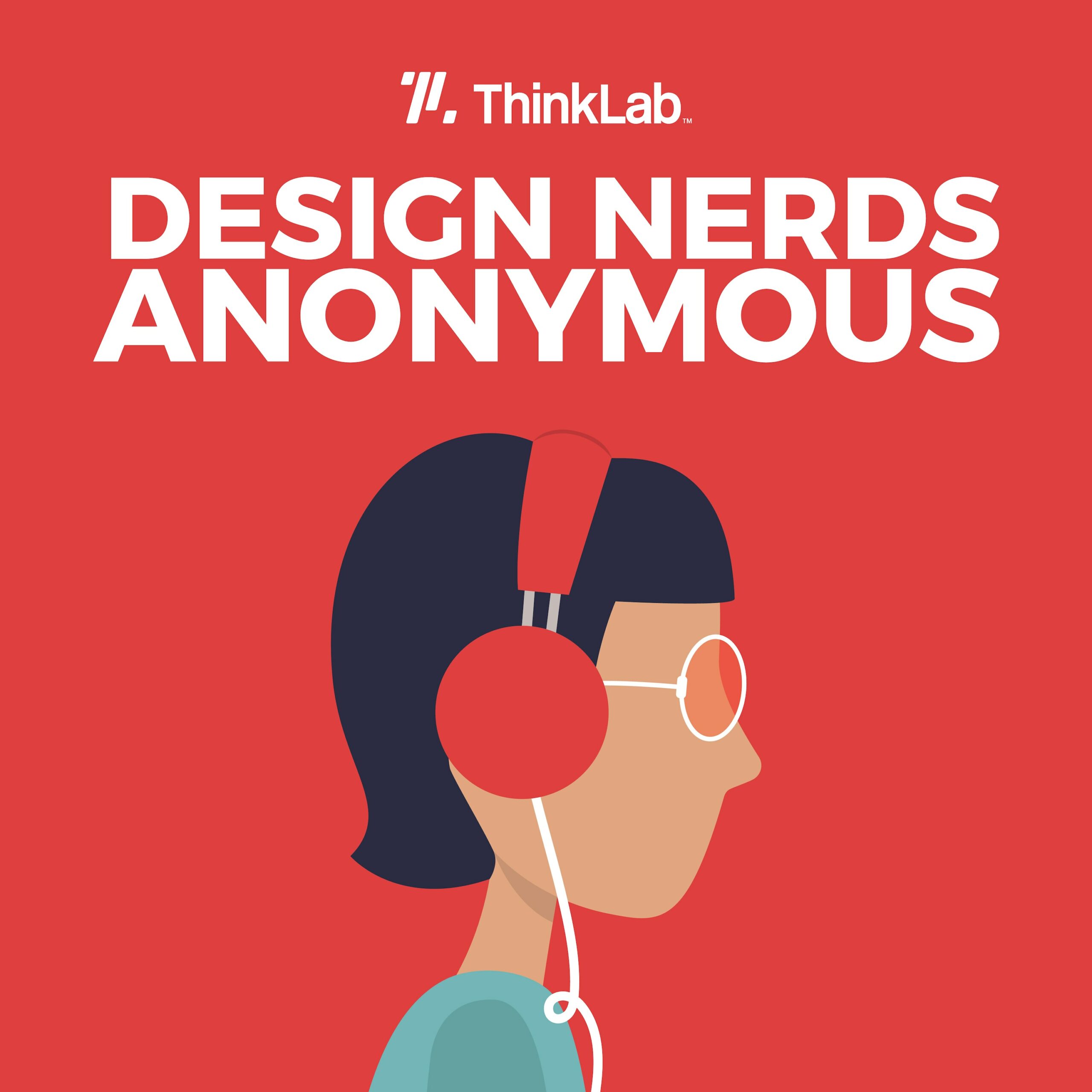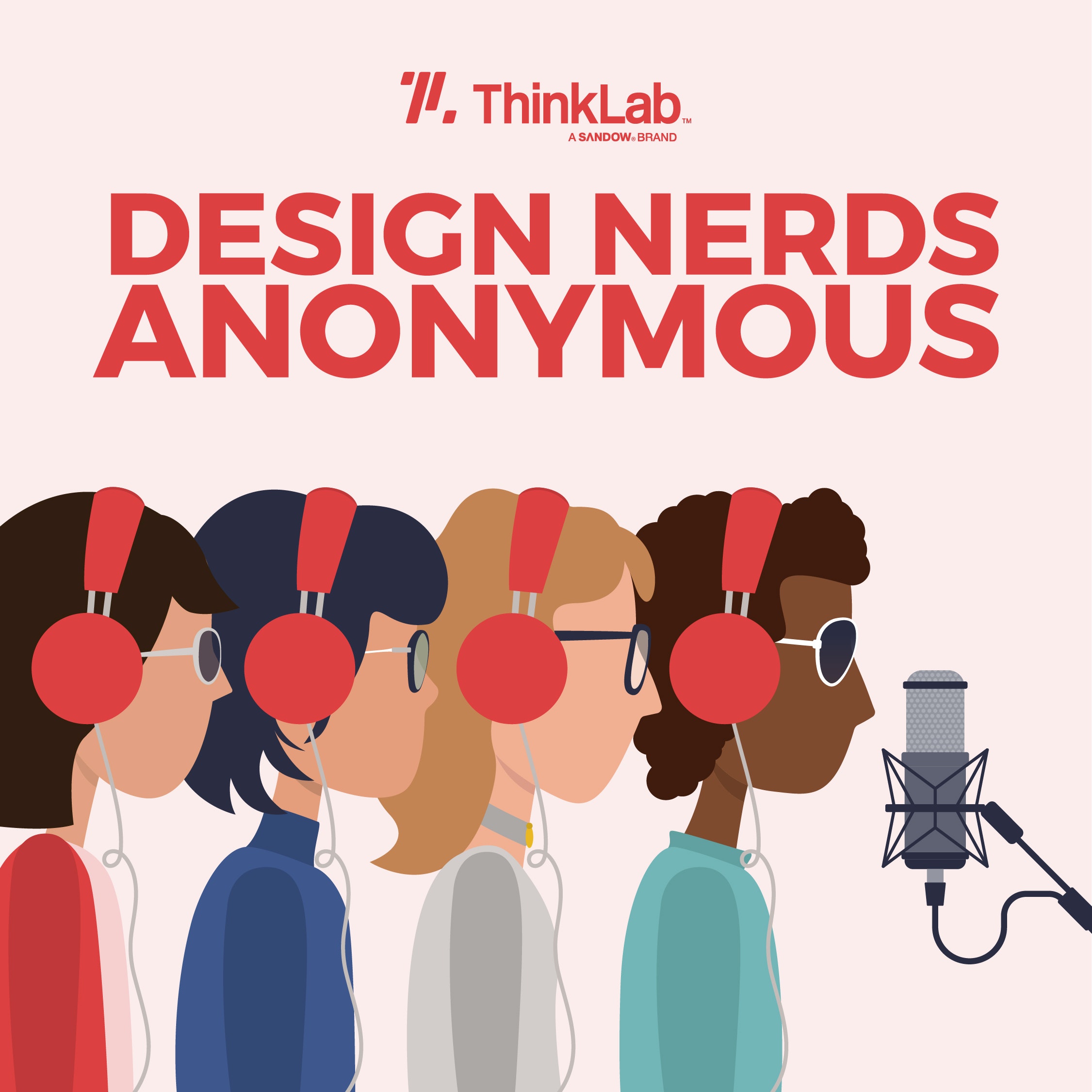Are you ready to unlock the secrets of creativity in the workplace and explore the exciting possibilities of the digital age?
In this episode, we delve into the fascinating world of design, technology, and innovation with Creativity Strategist, CEO Advisor and Author Natalie Nixon.
Also in this episode, join our special guests Carmen Cruz and Michelle Rotherham from CannonDesign as we discuss the importance of defining creative time, embracing new digital tools like the Metaverse and AI, and fostering collaboration in the design industry.
Discover how to combat the challenges of creativity in a time-starved world and find inspiration to design the future you envision. Whether you’re a seasoned pro or just curious about the creative process, this episode has something for everyone. Tune in and get ready to supercharge your creativity!
- Learn why implementing creative thinking in your team is crucial and discover the immense value of fostering workplace creativity.
- Learn how to “define creative time” and understand its role in managing creative tasks effectively.
- Discover how cutting-edge digital tools are shaping the future of the design industry in a deep conversation about their potential.
Tune in to our trailer for more, and subscribe so you don’t miss our upcoming episodes.
Thank you to our sponsors Mannington Commercial, THEMART and NeoCon.
(Please excuse any grammatical errors in this transcript as it was auto-generated from an audio file.)
Welcome to season five of Design Nerds Anonymous, the podcast that sparks curiosity at the intersection of business and design. I’m your host, Amanda Schneider. Now, every episode in this season is packed with knowledge handpicked from six months of intense research during Think Lab’s most recent design hackathon.
We’re exploring how the ripple up effect of Gen Z is set to drive change. In this episode, we’ll tackle one of the top challenges facing creatives today. How to stay creative?
In chapter one, meet our guest expert is Natalie Nixon, a creativity strategist for the C suite, Author of the book, The Creativity Leap and one of the top 50 keynote speakers in the world. She’ll share her insights on how to keep the creative spark alive in this era of a time drought.
Then in chapter two, we’ll hear from two brilliant minds from CannonDesign, a top interior design giant of design firm who will help us apply these insights.
So whether you’re a budding designer, a business leader, or simply hungry for knowledge, there will be something in this episode for you. But before we dive in, let’s give a big shout out to our incredible sponsors who make this podcast possible.
All right, my fellow design nerds, let’s meet our chapter one interviewee.
[00:01:33] Natalie: My name is Natalie Nixon. I’m the CEO and founder of Figure Eight Thinking where I am, a creativity strategist. I’m also a global keynote speaker and the author of the award-winning book The Creativity Leap Unleashed Curiosity, improvisation and Intuition At Work. As a Creativity strategist, I help and advise organizations and leaders on ways to reframe their futures, specifically through the lenses of creativity. And foresight the big mission in my work, is to change lives with ideas.
And when I drill down from that more specifically, it’s to really help people understand that creativity is not a nice to have. It is a must have.
we are all hardwired to be creative. The difference is whether or not you’re investing the time and the space to build your creative capacity. And if you think of it in that way, Sometimes artists are not investing the time and space to build the creative capacity. Sometimes designers are not investing the time in space to build their creative capacity.
So in my book, the Creativity Leap I have through my research, landed on what I hope is a simple and accessible. Way to think about creativity and a way to democratize creativity. So the idea is that creativity is our ability to toggle between wonder and rigor, to solve problems, generate meaning, and produce novel value.
[00:03:07] Amanda: if I remember correctly, you had a triad of ways that you can keep that wonder and rigor in your book. tell us a little bit more about that trio and the ways that we need to make sure that we’re keeping this passion and making time for it.
[00:03:20] Natalie: I realized early on it wasn’t enough for me to say, toggle between wonder and rigor to solve problems. And off you go. You’ll be creative. How do you consistently and sustainably do that? And that’s when I came up with a three eye creativity model framework. And the three ‘I’s are. Inquiry or deep curiosity, improvisation or the ability to be experimental and to be all about the build and intuition.
Intuition is not something we talk about or touch upon in business school, law school, medical school, or even design school. And I know this because I was a professor for 16 years and I’ve taught design, engineering and business students. We don’t talk about intuition and yet, Every successful leader, no matter what their sector is, will talk about the role of intuition and strategic decision making.
So the ways that we can consistently and sustainably activate and sustain our creativity is to find ways to be more curious, to improvise and to intuit and to listen and act on that intuition. So just as an example, one of the best ways to build your curiosity, which is fundamental to any creative pursuit, is to ensure that you are always learning.
And that could look like surrounding yourself with people who are different from you, a fancier way of talking about this is about cognitive diversity, so making sure that. You are entering environments where people have different training, different sets of experiences, because you’ll learn that they will approach a similar problem from a very different lens.
And one way to do that in a virtual environment is to attend a webinar. And a sector that you know nothing about. So for example, if you work in fashion, attend a webinar in the ag tech sector in agricultural technology, and you’ll be amazed about either some of the overlapping consistencies, about some of the challenges or a totally.
Different challenge, but there’ll be an insight that will emerge for you that you can bring forward into your own work. Another way to build that curiosity is to be a clumsy student of anything.
when you’re a clumsy student of something, you’ll activate all three eyes. You’ll get braver about asking questions. There’ll be no shame in your game to admit ignorance.
Build a lot more humility. You will get a lot more confident about being experimental and improvising, and you will have to lean into your intuition. Intuition is pattern recognition. It’s like a muscle. The more we use it, the stronger it gets, and the more we ignore it, the flabbier it gets.
[00:06:19] Amanda: when we spoke to leadership, one of the things that they talked about was this Pinterest era.
How, access to all these digital tools from a design standpoint, especially interior design standpoint is really Creating these homogenous designs And then when we spoke with our young Gen Zers about how we combat this, challenge around creativity they said, you know what?
It’s not what you think. Digital access is a really good thing. The culprit here is a lack of time. And in this Amazon era when there’s more to do than ever, I am forced to Pinterest because I don’t even know how much time I have. I just know that I feel like I have to hurry. So I love your ideas of cross pollination, the ways to activate those triple i’s, but any other advice for our audience when really this era is a era of time drought, and that’s some of our challenge here.
How do we build in time to make sure that we can replenish that creativity bucket?
[00:07:15] Natalie: I love the distinction that these younger people are making about. Reframing the way we’re thinking about this technology and the technology truly being a catalyst, a collaborator. I wrote something very similar in a recent article for Fast Company about. Artificial imagination, And looking at chat, g p t as a co-conspirator, a collaborator, a catalyst, and their point about needing time for deep thought and deep work is essential.
Cal Newport, who some members of your audience may be familiar with his work. He’s an expert on productivity, but he talks about deep work and deep thought, so it has to be modeled.
the churn of work is not sustainable and it’s contributing to the unprecedented amounts of burnout that we’re seeing in so many organizations and so many companies. So if leaders can model the need for dedicating space and time for that deeper, rigorous work than something like, A Pinterest or any of the other tools that are available become this catalyst.
They become a starting point from which all of the other creation can occur. One of the things I wrote about in my book, the Creativity Leap is that there’s nothing new under the sun. the point is all about the remix and the mashup and the reconfigurations and juxtaposition of.
things that people formally would’ve never thought to put together, and you do need time to do that. So what that could look like in an organization within a team, you could start with baby steps and say, one morning a month, hopefully we get to one morning a week.
We have a period of time, where there are no calls, you not on email, you’re not responding to clients, and you’re able to. Do this immersion into work of your choice. It doesn’t have to be the necessarily the project that you’re responsible for, because one of the things we know about where all the juicy bits of ideas come from is when you walk away from the work.
It’s when you go for a walk. It’s when you’re engaged in meaningful conversation, because that’s sparking different neuro synapses in the brain so that when you come back to the work at Ham, You’re much more generative and you have really cool ideas. Google did a version of this years ago.
They called it 20% time, and so every Friday they allowed people to tinker. It didn’t have to do with anything to do with their P N L responsibilities. One of the things that was birthed from that was Gmail, so whatever your variation and riff is on that. Try it, model it.
And you also have to incentivize it. You have to really give people the time. Sometimes money needs to be involved. in order to maybe go on a micro retreat, be able to attend a conference that you never formally would’ve attended. But there are absolutely ways.
Within our working lives to, to make time for it.
[00:10:25] Amanda: I love that you started with advice for these companies because part of what we’re talking about in this whole hackathon is recruiting, retaining, and connecting with Gen Z. So really, how do we build. These cultures of retention.
if you had to shift that question to individuals,
what advice do you have for these individuals that are facing burnout at, unprecedented rates to make sure that they maintain their passion for work and their creativity.
[00:10:53] Natalie: two ideas come up for me. the best place to start is to calendar time for yourself, for your own sanity as an artist, as a designer, if it means that one morning a week you’re gonna get up earlier so that you can. Do that immersive work in silence and quiet or whatever the environment needs to be for you, you have to commit to that.
You must be intentional about it because for all of this talk that I give about building creative capacity, it must be intentional. We have to commit to it. In fact, I think that our lives depend on it. Our work depends on it. As we’re trying to innovate, it’s the only way forward.
You also know your own particular. Circadian rhythm and time of when you feel most productive. So you must listen to that and pay attention to that.
For me personally, it’s the morning time, but for other people it’s the afternoon. For other people, it’s the evening. So carve out the micro bits initially, but commit to it In terms of the spatial environment that you need to generate your most creative output?
The other way? I would talk about this on a personal individual level. Is, and this is gonna be part of my next book, it’s still a work in progress, but the framework I’m developing, I call the motor framework, M T R.
And what I mean by that is those are the three dimensions that you can. Hone in on to do what I call the invisible work. The work that isn’t when you’re churning through email on Zoom or teams or at the whiteboard, but is when we step away from that and we’re doing activities that, are in the realms of movement.
That’s the m thought, that’s the T and rest. That’s the R. So movement, thought and rest. In those dimensions, on a personal level, how could you move more? How could you play more? What are ways that you can do deep thought and thinking? Because we’re robbing ourselves of thought
that’s the thought dimension. And then the R is rest supposedly a third of our lives is meant to be in rest in sleeping because the brain needs that recovery period. pausing, resting, daydreaming, sleep, really trusting in all of what brain neuroscientists called the default, region of the brain. Allow that part of your brain to be activated through rest.
So again, motor is movement, thought and rest.
[00:13:32] Amanda: In the introduction of your book, you, give a definition of art as seeing the world. That does not exist. And I think what’s unique about our audience is today you have the opportunity to speak to this broad, visionary audience that is trying to help us design the world as it could be coming out of the pandemic, especially rethinking where we spend so much time in the workplace Another quote was, we need to piece together a world of work that does not yet exist. One where people show up fully invited to bring their whole selves to the job and to create. So I want you to talk about this a little bit because I feel like our audience does so well in thinking this through and designing this for their clients where they often struggle.
Is in applying it to their own business. So tell us about your audacious goal of leveraging the creativity leap over the gap between what is today and the optimal world of work we must build and what you hope this audience hears from your work.
[00:14:33] Natalie: full transparency. It was the filmmaker, Ava DuVernay who said that statement about art is about seeing the world that does not yet exist. And I think all art disciplines really are teaching us new ways of seeing, they’re teaching us how to see.
You actually cannot be as excellent and amazing a designer and artist for others if you aren’t feeding that into your yourself.
The fundamental core competency that we need in order to be adaptive. I believe is curiosity. if you take nothing else from our conversation, take away the excitement, the joy, and the necessity to remain curious.
[00:15:21] Amanda: Natalie, you have inspired us today, you’ve inspired us with your book. So if any of our audience wants to get more insight onto your next book that you’re writing, where can they find more information?
[00:15:34] Natalie: People can go to Figure Eight Thinking the number eight, Figure Eight Thinking.com. I’d love. You to check out a sample chapter of the Creativity Leap, which you can easily do here. I have a lot of resources which you can download, which can be found under the resources tab on the website.
please follow me on LinkedIn, on Instagram. and definitely be added to the Ever Wonder Newsletter. my next book is going to be around some ideas. I’ve actually been prototyping in my fast company articles, so you can read. More of that un fast company. but just connect with me and thank you again.
I hope that conversation with Natalie has left you inspired. We’re just getting started in chapter two. We’re joined by CannonDesign, a top interior design giant of design to help us move these ideas from theory into practice. But what gets me truly excited is your exponential potential to put these ideas into action.
Yes, you, the one listening to this podcast, our industry has so much influence. So How will you use yours as you listen? Think about your own company, your coworkers, your clients. Who do you know who could benefit from these insights? All right, here we go. Let’s meet our friends from CannonDesign
[00:16:57] Michelle: I’m Michelle Rotherham. I am with CannonDesign and I lead our St. Louis, interiors practice as well as co-lead our commercial market. one of my biggest takeaways from this, was really that leaning into creativity is. It is almost a life decision, right?
so much of what she said just resonates with being, well in general. the thought of fostering movement and making sure you provide time for deep rest and and having fun and you can’t be creative or at your best. if all of those other things are outta whack.
I think Carmen we’re on the opposite side of the millennial scale.
[00:17:41] Carmen: We are, I
[00:17:42] Michelle: I’m still in that as well.
[00:17:45] Amanda: So we’re gonna, we’re gonna come back to that, Michelle, but I wanna make sure we give Carmen a chance to introduce herself.
[00:17:50] Carmen: My name is Carmen Re Cruz. I also work with CannonDesign with Michelle. I’m part of the commercials in. Tier team in New York City. and I had the pleasure of participating in one of the hackathons, I would say that my biggest takeaway, in addition to what Michelle said, I really, loved when Natalie brought up the idea of staying curious and building on that curiosity.
Cause I feel like day to day everyone tends to be, curious. As babies, we are very curious too, so it’s as we get older, we get to a point where we’re so focused on just producing that. Sometimes we leave that on the side and we just need to
Take the time to think about that a little bit more and see what are ways that we can do that again, feel like kids again and implementing that in our day-to-day, not only on work, but also on our daily lives. even something as, interesting as looking at what other people in other fields are doing, even if they’re not fully related to what you’re doing, you can learn from what they’re, working on.
And I’ve seen that through, learning about different cultures or learning about different, life experiences. But I never really thought about what are some of the things that my sister is doing cuz she works in agriculture then maybe I can take away from and implement it.
[00:19:05] Amanda: the interesting thing is, this is not just about Gen Z, even though that was the focus of our research, these are life hacks. Maybe we should all be incorporating, And Carmen, I don’t know if this stuck out to you, but there was a moment in your session where everyone was, talking about Pinterest and we were talking about how, everyone thinks that what is causing maybe this burnout or sea of sameness or tools like Pinterest.
But the reality is it’s not these digital tools that access is a good thing. The real issue is lack of time. We’ve always wanted to stay curious, but we just get busy. How do we fight this passion paradox where we’re all like perfectionists and wanna be so creative and wanna put our whole hearts into everything with this time drought that we’re in?
[00:19:52] Michelle: I have a few things I’m just thinking like in general, it’s a blessing to have a lot of work, but it’s also a curse, right? it’s also a blessing to have a lot of good work that you want to be doing, that you have to use your creative muscles for.
So we do, we have to figure out ways to do this because no one wants to turn down really. Like innovative, great work. these are the things that I think, you have to think about, or firms should be thinking about is being flexible with people for when they get their work done.
especially when they’re truly like in the stage of authoring conceptual design. it’s not something that you can schedule into an hour and come up with something incredible. If you can, I wanna meet you. because it’s almost never how it
works. there’s a process to it. and even for individuals, there’s not a switch for that.
So I think just for firms to be able to lean into that and Also if someone does their best creative work at night, maybe don’t expect them to have worked all day leading up to that. it’s not easy. There’s meetings for other things. People are on multiple projects.
it’s not the easiest thing to pull off, but I do think that for an individual, at least for them to be able to iterate on their own. It’s good to be flexible for that.
[00:21:13] Carmen: I actually wanna build a little bit on what Michelle was saying the time factor, and I remember that was also another thing that we discussed, a lot during our hackathon series. Having that opportunity to have extra time to think about how we’re developing something that phase of design.
every individual has a very different way of tackling, a task or tackling, a part of that, design, development. And sometimes there is definitely that lack of, time but, I’ve learned through, these big transition into this hybrid world that one might think that we have a little bit more extra time, cuz we’re not commuting that much.
We’re, we’re in the same space. I can work from home very easily and that kind of helps me set up a time to just focus and think, but because of this New ways of working. Everyone’s always connected. There’s easier access to you all the time that, you sometimes lose that focus that you really need.
So yes, having, having these discussions firsthand and like at the very beginning of starting a project, I think are crucial. trying to also think about, we work. with hours, and we have this schedule for different projects depending on the scale of the project, but sometimes that’s the challenging part because you are trying to not only tackle one task, you’re also trying to deliver so that other teammates can continue working off of what you’re doing.
So it does put you a little bit of pressure to be working at a faster pace and. also, depending on the time and the experience that you’ve had, that can also be very challenging. I imagine people, like me that I’m, I’ve been at Cannon for a couple of years. Only I haven’t had, as much experience in the profession as other colleagues like Michelle, for example.
And sometimes I do question, a good amount of time
to put good work out there and, give it to my next team mate to, keep working on it. we definitely need to have these conversations and, keep in mind that everyone has a different, Timeline for everything. And it may take me four hours and maybe two hours for Michelle to complete something, but I know that no matter how much we take each one, we’re all trying to put really great work out there.
[00:23:33] Michelle: That’s a good point, Carmen, there’s discipline. To fostering creativity, but really every mode of work right? We could have the same conversation about focus work Cuz I, I feel like that’s the challenge too, is toggling between all of those things all day.
it’s hard to solve, but we know the answer, Um, Stop having as many meetings where you don’t have outcomes. I find myself at the beginning of each week and I accept a lot of things that come at me, but before each week starts, oftentimes I have to start filtering off because truly it won’t be able to get done if I don’t remove some things from the calendar.
So it’s also about prioritizing. giving your teams the ability to prioritize for themselves. And from a Gen Z level, they might need help with their manager or a peer, with what can I remove here? I’m not gonna be able to get all my work done. it’s being able to have those open conversations with, okay, what is the task at hand?
What are you able to put off until next week? Being able to have those conversations openly will, again, it’ll speed things up for everyone to get to a resolution
[00:24:49] Amanda: one of the ideas generated in our session with our gen Zers from this research was define creative time.
how firms can really say, okay, you should expect to spend about 10 hours on this or 20 hours on this, or a hundred hours on this. but really helping them define what that creative time is.
Because we may not have had to do that if we were physically in an office, cuz you might have seen people and bumped into people. But in this more hybrid era that we’re in today, we might have to be a little bit more intentional about that.
[00:25:16] Michelle: Yeah, I thought about that a lot because as, I manage a lot of people, so it’s also okay, how can you build that in? But at the same time we talked about it being a life decision, To make time for this kind of stuff.
it’s on the firm, but it’s also on the individual to foster that for themselves. I don’t see creativity coming out of, stagnation. if, I love it when people travel, please take your PTO and go somewhere cool.
because you’re not only gonna be rested, but you’re also going to have seen things that you hadn’t seen before and you’re gonna be able to come back. And be inspired to create.
firms can, however, create situations where people are.
building things from within too. It’s not always project based. So at at Cannon Design, we have a program called amp and it’s basically an incubator for ideas. So if anyone has an idea, whether it’s how to make an internal process better or to literally create a product for the outside world AMP is an incubator for that.
Designers wish a lot. when we’re working on a detail or we’re working on like a common problem, we’re like, God, if there was only this, like AMP is a program that allows us to imagine that actually becoming a reality.
[00:26:40] Amanda: one of the things we loved about your contributions, Carmen, to our session, is how you were thinking about some of these digital tools like the Metaverse. And certainly even since our session, the conversation around AI has just exploded.
So I would love if you could talk a little bit about when it comes to creativity, what maybe some of these new digital worlds could afford us or how we can leverage them for benefit.
[00:27:07] Carmen: I do see a lot of value in all of these technological advances and, new opportunities to create. I would say that where we’re still like in the beginning stages of figuring out how these tools, Can really fully benefit us, but we’re already starting to see some really cool stuff out there.
And with ai, I’ve seen two sides of it. Like people see it in with different, perspectives, but I think it’s again, time. something we’ve noticed about, AI is how fast you can create something with that tool. And Maybe that is something that we can take into account when we are starting to.
create visuals for, for our clients as an example. these things typically take a lot of time to develop and that tends to take time from those creativity hours that you need to develop the project. we had this, session about a week ago with our. our IT leader, she was actually in our office and all of the young members of our, office, gathered all together to start having these conversations with her about what are some really cool technologies that we can start implementing into the firm cuz we do see value in them.
And AI was definitely one of those. And it was a really interesting conversation because everyone agreed that. It can definitely be something that’s gonna help us on the long term. from what I’ve seen, I think it can be the future of, visualization and what we’re doing, especially in a field like ours, that it’s purely visual.
not everyone can easily visualize a space. you have to put in the work to make that happen so that your client can see what their space is gonna look like. But it takes time. so if you realize that, there is this need for, not only creatives too, Develop really cool things, but also take that time for themselves to rest.
to reboot so that they can keep producing really cool work.
[00:29:07] Michelle: Carmen, you’re making me think about, allowing people to do what they love and what they’re good at. I think a lot of times, I have fallen to this mindset in the past where you think, I have to know everything.
if I’m gonna lead this team or if we are gonna do something different than I have to also be an expert at this. And I’m doing a lot better job at abandoning that. And just and again, it helps to be at a bigger firm than has a lot of really talented people that you can call on.
But, that’s really how you’re gonna build the future is allowing people, on a team to have diverse perspectives and they’re, again, they’re doing what they love. So and then they’re training other people that think they might wanna do that too.
it goes all the way to what Carmen was talking about, like AI technologies and what is possible, what can be automated so that we don’t necessarily have to spend as much time on the things that truly, I would be happy to have a robot do in the future.
I could make a long list of those things.
[00:30:11] Carmen: just wanted to add, there’s also like that, scary thought of oh my gosh, a robot. Now it’s doing something for me
But I saw a lot of excitement from my colleagues when they were speaking about these, and that makes me think about. Remembering what your passion is, cuz that’s what really inspires you and motivates you to go to work every single day and keep working and keep doing. What you love.
And, if there’s opportunity for, not only growth, but also to keep building up what you are really good at, cuz you really love it. That makes you excited to go to work every day. That makes you excited to go to the office cuz the tools may be there, like VR for example, they’re there, like you wanna play with them, you wanna work with them.
And that’s when you also start bringing all of these, colleagues back into the office, which is something that we’re trying to get back to know time will tell how that plays out
[00:31:03] Michelle: Creativity comes in many forms. I think that’s also the point to get across here is that it isn’t just the person or the team that are creating that initial conceptual story for a project that have the ability to be creative. Like it’s literally every person on a project team has that ability, and it looks different at different stages of the project.
you have the ability to be creative at every, like at every point in this project.
[00:31:33] Amanda: as you look to the future, what are you excited about that this moment in time offers as an opportunity for candid design for our industry, for creativity and general, about where we’re headed.
[00:31:46] Michelle: the reason I love this business is because I get to work with people all the time, both internal and external. from an industry standpoint, just thinking about what innovations are ahead of us, I think architecture is one of those industries that tends to lag when it comes to like how buildings are built.
Like what are, not that we’re, we are making strides. But at the rate that other industries are making, it’s not fast enough. So I’m looking forward to seeing over the next 20 years in my career, like how that changes and also how CannonDesign is gonna be an a catalyst for that.
[00:32:32] Amanda: Carmen, anything you wanna add in closing?
[00:32:35] Carmen: the other thing that makes me, Really optimistic about not only what our profession is doing and what it can do in the future.
what I’m putting on the table is just the conversations with people from other areas. I get really excited every time I get the opportunity to work with a different team in another part of the country, in another part of the world. The conversations that happen are typically very different.
And when I started at Canon, I was in our New Year team and working with specific projects and specific people, and it was fun and it was great. But the moment that we started branching out and working with people from Chicago, and then working now currently with people in Buffalo, it’s just made my whole experience just.
Even more gratifying and more exciting, And I think this whole idea of collaboration, it’s key. it’s not only an essential thing in the type of work that we do, but. Just embracing the fact that now that we’re in a hybrid world and we get even that exposure to people on the other side of the world, even cuz we have teammates in Mumbai for example, it just makes the whole, experience, gratifying and exciting.
And it makes me excited to go to work and have these conversations every day. there are challenges, but you can work around those, Maybe before when we were like very, in our little groups, we didn’t see, them firsthand. but I think they just make us, better people.
They make us, appreciative of other people’s time too. They make us appreciative of, the different views and the different perspectives. I think that’s what’s really magnificent about, what we do not only in our profession, the fact that we. had to change to this, hybrid environment.
[00:34:22] Amanda: A blessing in disguise, maybe coming out of this crazy experiment.
design nerds. Anonymous is a proud member of the surround podcast network. Discover more shows from surround at surround podcasts. com. Want to dive deeper on our Gen Z insights for your brand? Visit thinklab.design. And head to the insights and reports section, and then choose 2023 design hackathon you’ll find our full research plus options for how to bring these insights to your firm or business in a CEU format, or translate them to your team through one of our dynamic workshops or keynotes.
This episode of Design Nerds Anonymous was produced and edited by Sandow Design Group. Special thanks to the podcast production team, Hannah Viti, Wize Grisette, Rachel Senatore, and Samantha Sager.

